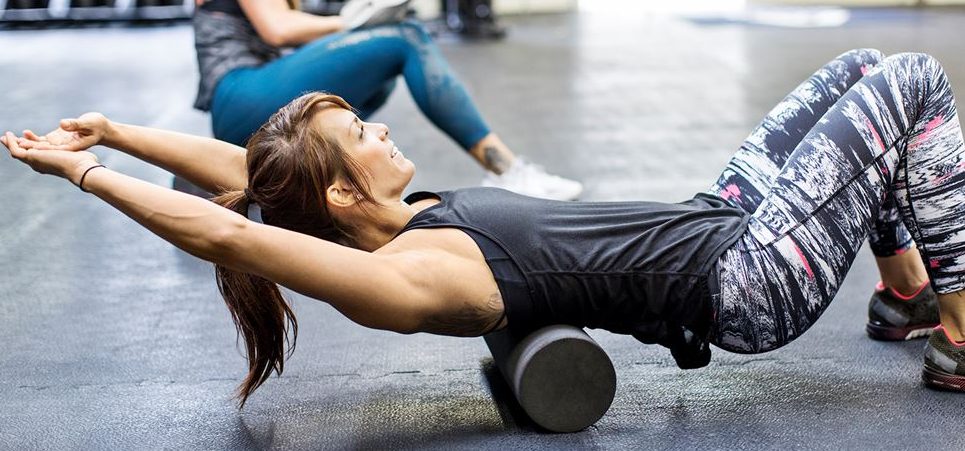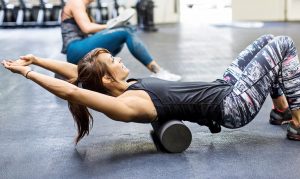- A foam roller is used as a self-massaging tool, intended to help with performance, injury recovery and flexibility.
But does it do all these things? Some claim that rather than help, foam rollers cause tissue damage and could make performance worse. So, who is right?
Recent research has shown that foam rolling is beneficial. In 2014, Macdonald et al. did a study that included a test group that used a foam roller after doing controlled exercise while the other test group just did the exercise. The result of the study showed that foam rolling was beneficial in decreasing post-exercise soreness as well as increasing range of motion. Other benefits seen from this study included the fact that the foam-rolling group was able to jump higher compared to those that did not use a foam roller.
So, foam rolling essentially decreased pain in participants and increased their performance.
In a similar study also in 2014, Healey et al., showed that individuals who used a foam roller following an exercise of planking had a decrease in post-exercise fatigue in comparison to those who did not. This means they weren’t as tired following the exercise. Healey suggested that due to the decrease in the post-exercise fatigue, participants would be able to exercise more frequently and therefore would lead to an increase in performance.
But can foam rolling cause damage?
If foam rolling is done incorrectly there is a possibility of injury. When I have asked some clients in the past to show me how they are using a foam roller, I have seen some unstable and incorrect form. When watching someone use a foam roller, I am looking to see that they are not putting their back or shoulders in an unstable position to get a stretch out of a muscle. There are always ways to correct these bad habits, and only a few simple corrections are needed to do it safer.
Another theory I have heard in the past is that foam rolling itself causes damage to the muscle. Their chiropractor had told them that the compression on the tissue caused a decrease in blood flow to the area and therefore would lead to cell death. This is not supported by research. A study by Okamoto et al. measured blood flow and arterial stiffness following a session of foam rolling and found that the arteries had decreased stiffness and the blood nitric oxide levels increased (causes opening of blood vessels). These results show that blood flow actually increases following foam rolling.
Do you want to decrease pain following exercise or to increase performance? Maybe implementing some foam rolling into your exercise routine is advisable.
If you are still on the fence on whether to implement foam rolling, set a measurable goal and see if foam rolling can help you out. If the aim is to jump higher and you seem to have plateaued with your current training, measure your current jumping height, then do a trial of 4 weeks of foam rolling every time you exercise. At the end of the 4-week trial see if there is a difference; if there is no difference then remove it from your routine. However, if it worked then keep up the good work.
There are a numerous ways to use a foam roller, and for every muscle group, the technique is slightly different. Try to connect with an athletic friend, fitness coach, or health professional to give you some guidance on the best practices for foam rolling.
1. MacDonald G, Button D, Drinkwater E, Behm D. Foam Rolling as a Recovery Tool after an Intense Bout of Physical Activity. Medicine & Science in Sports & Exercise. 2014;46(1):131-142.
2. Pearcey G, Bradbury-Squires D, Kawamoto J, Drinkwater E, Behm D, Button D. Foam Rolling for Delayed-Onset Muscle Soreness and Recovery of Dynamic Performance Measures. Journal of Athletic Training. 2015;50(1):5-13.
3. Healey K, Hatfield D, Blanpied P, Dorfman L, Riebe D. The Effects of Myofascial Release with Foam Rolling on Performance. Journal of Strength and Conditioning Research. 2014;28(1):61-68.
4. Okamoto T, Masuhara M, Ikuta K. Acute Effects of Self-Myofascial Release Using a Foam Roller on Arterial Function. Journal of Strength and Conditioning Research. 2014;28(1):69-73.





